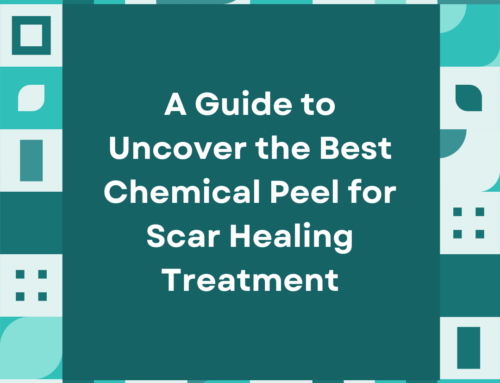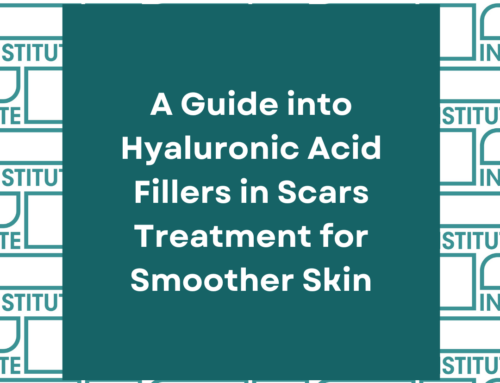Can Subcision Make Scars Worse?
In dermatology, subcision is a popular technique used to address depressed scars, including those from acne or surgical procedures. It works by severing fibrous tethers that pull the scar down, causing it to be indented. While many patients see significant improvements after subcision, it’s natural to question whether this procedure might sometimes worsen scarring. This article examines the potential risks associated with subcision, factors influencing these risks, and how to manage them to ensure the best results.
How Subcision Works
Subcision is a minor surgical procedure specifically designed to treat atrophic skin scars, such as ice pick and rolling scars. However, it is not as effective for papular or keloid scars that are raised. The procedure involves using a specialized needle to cut through the fibrous tethers attaching the scar to deeper skin layers. By severing these bands, the scar is rises up, resulting in a smoother skin surface.
Subcision is typically performed in-office with a local anesthetic. First, the treatment area is cleaned and prepped, then a small incision is made, through which the needle is inserted to disrupt the fibrotic bands beneath the scar. After the procedure, the area is often massaged to encourage collagen production and improve healing, which enhances the scar’s appearance over time.
Potential Risks and Concerns
Although subcision is largely effective and safe, it carries some risks that might potentially make scarring worse. These risks are especially relevant for those dealing with post-acne scars, as improper treatment can exacerbate the condition.
1. Post-Procedural Swelling and Bruising
After subcision, swelling and bruising are common. These typically disappear within a week or two and sticking closely to aftercare guidelines can help as well.
2. Risk of Infection
As with any procedure that involves penetrating the skin, infection is a possibility and can potentially worsen scar appearance if not treated promptly. Ensure that your provider follows proper sterile technique to mitigate the risk.
3. Over- or Under-Correction
Subcision may occasionally lead to over-correction or under-correction. Over-correction could result in new skin irregularities, while under-correction might not adequately address the scar’s depth. Therefore, it’s crucial to select a highly skilled practitioner for precise treatment.
4. New Scar Appearance
Occasionally, subcision may lead to the development of new scars if it causes additional trauma to the skin, especially if healing is compromised. Proper technique and aftercare are essential to minimizing this risk.
5. Scar Recurrence
If underlying issues like ongoing acne are not addressed, new scars may form. Combining subcision with other treatments can help manage these issues and improve overall outcomes.
Factors Influencing the Risk of Worsening Scars
Multiple factors can determine whether subcision might worsen scars, particularly for atrophic acne scars.
1. Skill & Experience of the Practitioner
A highly skilled professional is more likely to use safe, effective techniques to achieve results. It is important to choose a board-certified dermatologist or experienced cosmetic surgeon.
2. Scar Type & Location
The scar’s type and location can affect how it responds to subcision. For deep or chronic scars, additional treatments or multiple sessions might be necessary to achieve the desired outcome.
3. Patient’s Skin Type and Healing Response
Variations in skin type and healing response can impact how well you recover from subcision. Individuals with particular skin types or a predisposition to keloid formation may experience different results. It’s beneficial to discuss your skin type and medical history with your practitioner to customize the treatment plan to your specific needs.
Benefits of Treating Acne Scars with Subcision
Subcision is an effective treatment for depressed acne scars, including rolling and boxcar types, and is suitable for various areas of the body, such as the face, chest, and back. Its main benefits include efficiency and minimal downtime, allowing most patients to return to their daily activities shortly after the procedure and see noticeable improvements in their scars within a few weeks.
Moreover, subcision boasts a strong safety profile. Although risks like infection and bleeding are possible, they are generally low when the procedure is conducted by an experienced professional. Adhering to aftercare guidelines can further minimize these risks and enhance the results.
In terms of cost, subcision is more affordable compared to alternatives like laser resurfacing or skin grafts. While prices can vary depending on factors like scar size, location, and practitioner expertise, subcision typically remains a cost-effective choice.
Overall, subcision offers a promising option for treating depressed acne scars. It can be combined with other therapies for enhanced results and a more comprehensive scar revision approach. Its quick treatment time, minimal recovery period, and affordability make subcision a valuable choice for achieving smoother, more even skin.
Tips for Reducing Risks & Ensuring Success with Subcision
To maximize the benefits and minimize the risks of subcision, consider the following tips:
- Choose an Experienced Practitioner: Researching to find a qualified, experienced professional with extensive experience is essential for a good experience with subcision.
- Follow Aftercare Instructions: Closely follow aftercare recommendations, including avoiding sun exposure, keeping the area clean, and using prescribed treatments as directed.
- Explore Combinatorial Treatments: Performing subcision alongside other treatments, such as laser therapy, chemical peels, or microneedling, can improve results and reduce complications.
- Set Expectations: While subcision can greatly improve scarring, it may not completely eliminate them. Setting realistic expectations will help in achieving satisfaction with the results.
Conclusion
Subcision is a proven method for addressing depressed scars, but it does carry some potential risks. If done properly and accompanied by proper aftercare, these risks are usually manageable. Understanding and mitigating these risks can help ensure successful results. If you’re contemplating subcision or other treatments in La Cañada Flintridge, book a consultation with the Scar Healing Institute to explore your options!
Schedule an Appointment
Scar Healing Institute
Scar Healing Institute is committed to developing the most effective treatments for scarring. Our team of scar revision specialists are continually inventing the latest technologies and formulas to deliver the best results for our patients.



